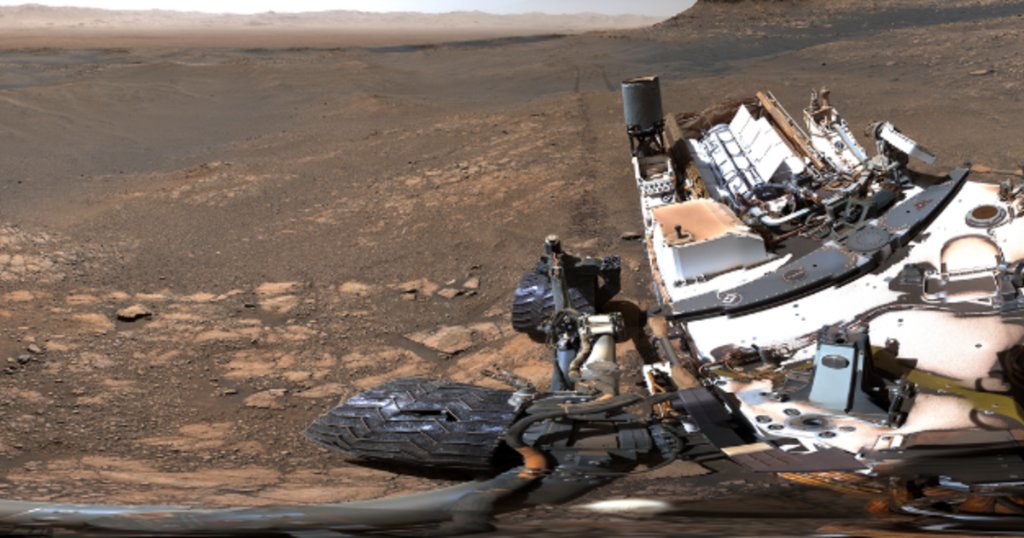Overwhelmed by the coronavirus coverage? Tired of the Democratic Party primary that seems to never end? There is other news out there. And with that in mind, we're going to do a science round up.
Are you a user of INSTAGRAM, TWITTER of FACEBOOK? How did people communicate before they were created? Ashley Strickland (CNN) reports:
Thousands of years ago, hunter-gatherers took the remains of ostrich eggshells and made them into decorative beads. But researchers found them in areas where ostriches never lived, sparking the question of how they got there. The beads tell a story of gift exchanges over great distances -- an early social network 30,000 years ago.
The eggshell beads contain enough information to tell the story of their journey, if you know how to look.
Researchers recovered the beads in Lesotho, a small, mountainous country encircled by South Africa. And thousands of years ago its high elevation and wealth of rivers would have provided an imposing spot for hunter-gatherers to live. Evidence of life at the site dates back to 85,000 years ago, meaning it sheltered hunter-gatherers through periods of climate change.
Megan Gannon (SMITHSONIAN) adds:
The new study suggests that the exchange network would have spanned at least eight bioregions, from arid scrubland to subtropical coastal forests. Stewart and his colleagues speculate that the system may have arisen during a period of climate instability, when access to a diversity of resources would have been crucial.
We have only one Earth (unless you possibly live in DC's multiverse). And that should make us take a lot more pride in it. However, we pollute and destroy -- look what General Electric has done to the Hudson River.
Not only are we harming our rivers and oceans, we're also harming creatures who live there. Dharna Noor (GIZMODO) reports:
There have been more than enough horrific viral videos of the turtles with straws stuck in their noses to show that plastic is a threat to them (I’ll spare you by not linking them). Studies have found that every minute, the equivalent of one dump truckload of plastic gets into the ocean, and researchers estimate every species of sea turtles in the world is full of microplastic. Eating all that plastic is often fatal.
Scientists have long thought that sea turtles eat plastic because it looks like their prey—plastic bags, for instance, resemble jellyfish. But sea turtles’ attraction to plastic may have more to do with smell than sight, according to a new study.
“This ‘olfactory trap’ might help explain why sea turtles ingest and become entangled in plastic so frequently,” says Joseph Pfaller, a biologist from the University of Florida who worked on the study, in a statement.
To be clear, the turtles weren’t tempted by plastic because it carried the odors of the human food it was wrapped around. Rather, turtles seem to be seduced by the smell of “biofouled” plastic, or plastic covered in microbes, algae, plants, and small animals on wet surfaces. That’s what happens to plastics that end up in waterways.
Now let's move over to Mars. That's the planet the land rover Curiosity has made so many discoveries on in the last years. Georgina Torbet (DIGITAL TRNED) reports:
Mars’s pluckiest rover, Curiosity, has made it up a steep, sandy slope to an area previously thought to be practically inaccessible and is enjoying the view.
For the past month, the rover has been wending its way up the path towards an area called the Greenheugh pediment. NASA researchers had wanted to explore this particular area for a long time, as it could hold clues to the geology of the surrounding crater, but they originally thought that it would be impossible to access it without months or even years of travel. However, they managed to identify a path that was accessible to the rover after consultation with surface properties scientists.
The route involved Curiosity climbing up slopes of 30 degrees or more, which is the steepest that the rover has ever attempted. While on its journey, Curiosity stopped to collect some data with its ChemCam instrument to investigate two bedrock targets, “Corriecravie” and “Shannochie”. By analyzing the rocks along the ascent to the Greenheugh pediment, the scientists can see how their composition changes with elevation.
- In 2013,
@MarsCuriosity caught this eclipse of Mars’ tiny moon Deimos by its larger but still pretty tiny moon Phobos. - Curiosity rover captures highest-resolution panorama photo of Mars ever taken https://cbsn.ws/2VUS081
- NASA's Curiosity rover captured its highest-resolution panorama of the Martian surface, including more than a thousand images and 1.8 billion pixels. https://cnn.it/2IrGuZN
- How’s this for 2020 vision? Over the holidays, I took a series of high-res photos of my hometown on
#Mars. This panorama is made up of a crisp 1.8 billion pixels. It’s my most detailed view to date. Zoom in: https://go.nasa.gov/3ap38hB










